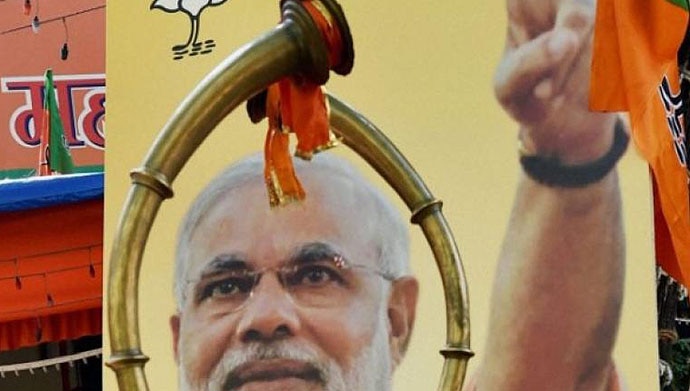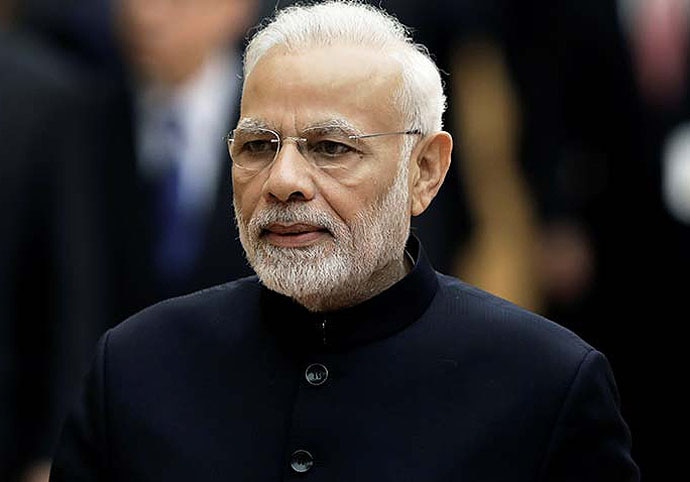Why I see Congress, not BJP, coming to power in 2019

‘Modi wave’ and ‘Modi juggernaut’ are words we heard of during the run-up to the 2014 General Elections — and we are hearing them again.
While the verdict of the 2014 elections admittedly was telling of a Modi wave, on what basis is the same being repeated now at the end of his term, when, barely two months back, the BJP faced a crushing defeat in three states? This is not clear to me.

Just about three months back, the Congress won three major Hindi heartland states — Rajasthan, Madhya Pradesh, Chhattisgarh — and the BJP is now left with just Uttar Pradesh to secure a chunk of seats in the Lok Sabha, the chances of which seem grim with the Samajwadi Party-Bahujan Samaj Party alliance. From 2014 to 2018, the BJP’s track record in the Lok Sabha by-polls has also been very poor.
Yet, some people want to claim there is a 'Modi wave'.
How?
Just about three months back, Rahul Gandhi was chosen the News Maker of The Year 2018 by India Today magazine — Rahul Gandhi was the story with his photo on several current affairs magazine covers in December 2018. Debating the phenomenon on TV, an expert said, “Rahul Gandhi is the un-Modi, the antithesis of Modi.” Another senior journalist recently released a video blog with the title, “The defining difference between Rahul Gandhi and Narendra Modi that nobody has spoken about.”
I am surprised that senior analysts and journalists are realising this defining difference only now while I wrote about it, using the exact word ‘antithesis’, in a May 9, 2018 column.
For five years, people focused on what Rahul Gandhi is not.
“Can Rahul be like Modi,” they asked. Finally, after the December Assembly election results, they are talking about what he is — his own unique qualities. Some editorials talked about how Rahul Gandhi has proved that the Narendra Modi-Amit Shah duo is not invincible, that the ‘Modi juggernaut’ can be stopped. “The Assembly elections result is called a ‘watershed moment’ in ‘contemporary Indian politics,” wrote Frontline in its January 4 edition.
I find all this amusing — and surprising. I am surprised that the Congress’ revival and Rahul Gandhi’s potential came across as a surprise to media pundits. And I am amused that a logical electoral win is being called a “watershed moment” and that just one term of the BJP's rule is called “contemporary Indian politics”. Did people really think the BJP will never lose another election and rule till eternity?

Meta narratives are political tools
Hegemonic meta narratives are either created at the top or have the approval of the powers that be — call it Althusser’s ‘ideological state apparatus’ if you will, made popular by repetition. If you don’t repeat them, and take a contrarian’s position, you are a deviant and shall be dealt with using violence, threat, lure and intimidation to fall in line.
Sections of the Indian media are mostly busy parroting meta narratives about the Congress party — the Congress doesn’t have the organisational skill that the Rashtriya Swayamsevak Sangh (RSS) has; the Congress is still far behind in the game; the Congress is arrogant, corrupt and lazy; and so on.
Things changed briefly after December 11 when, for a while, it became popular to speak positively about the Congress — but once again, after the February 14 Pulwama attack, the 'Modi wave' narrative is back.
But, to my mind, the narrative is either a deliberate lie — or is based on assumptions.
The BJP came to power riding on 10 years of anti-incumbency, spending Rs 714.28 crore in marketing. The 'landslide' victory consisted of 31% vote share — the lowest ever for any party to gain the single-largest majority.

Since then, eight other states also had Assembly elections in 2014, two in 2015, five in 2016, eight in 2017 and nine in 2018. After each of these results, the media created grand headlines eulogising the ‘Modi juggernaut’, ‘Congress removed from another state’, ‘Now Congress-mukt Northeast’ and so on.
However, if you look beyond the meta narratives, you’d see some uncomfortable truths.
From 2014 to 2019, except for Uttar Pradesh, the BJP hasn’t repeated a landslide victory anywhere else. In several states, they formed a coalition government, including states where Congress was the single-largest party. On Modi’s own turf, Gujarat, the BJP barely made it to the simple majority mark, and the Congress increased its footsteps.
In Uttar Pradesh, within a year of Yogi Adityanath coming to power, the BJP lost crucial by-polls in Kairana, Gorakhpur and Phulpur. The total by-poll performance during this term is alarmingly poor. A total of 27 Lok Sabha by-polls were held and the BJP contested 24 of them. Modi himself campaigned heavily in these by-polls — and yet, the BJP could manage to win only five seats.
The 2018 Assembly elections were considered a semi-final for both the Congress and BJP — and in that too, I would say Modi failed. In spite of the perceived Modi juggernaut, Rajasthan didn’t change its voting pattern, and removed a BJP government. If the 'Modi wave' was true, if ‘acche din’ and ‘vikas’ were truly delivered, why didn’t Rajasthan bring a paradigm shift in the way they vote?
On the other hand, Modi’s misgovernance in my view forced Madhya Pradesh and Chhattisgarh to finally give up on the BJP after sticking on for 15 years.
So, if we follow the pattern, Narendra Modi is all set to exit in 2019, likely perhaps to be reduced to what we call in pop music, ‘a one song wonder’.

Perhaps we treated the 2014 General Election as an event of far more importance than what it really was. It was no decisive verdict for eternity. What really happened in 2014 was that the people of India sought a change, not just from the 10 years of the United Progressive Alliance (UPA) but from 67 years of Congress rule.
The Congress is not just a political party — it is a culture, a way of life, something deeply ingrained in India’s DNA for generations. But the new generation sought a change, which is a good thing in democracy. People wanted to give the ‘new guy’ a chance to see what this guy could do that the previous guys couldn’t do in so many years. The wave of change naturally swept several states towards the early part of Modi’s first term as PM. But, as is the nature of waves, the 'Modi wave' too soon started to recede. The fact is, Modi is yet to stand the real test of ‘durability’ to be declared ‘invincible’.
That test is forthcoming in May 2019.
We cannot know there is a 'Modi wave' unless it hits the shore. As of now, in my view, it is receding.
Nothing really changed between December to now except the Pulwama attack and the Balakot airstrike. Rahul Gandhi is still on the path of making a great comeback. I would argue any talk of the non-existent ‘Modi wave’ is just an attempt to gain political mileage from the Pulwama and Balakot events and influence the minds of fence-sitters.

